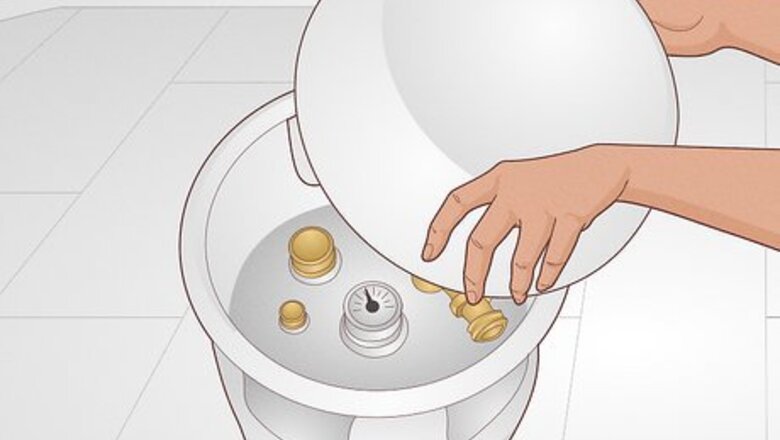
views
- Propane tank gauges are usually numbered 5–95. Each number represents a percentage.
- Look at the number the dial on the gauge is pointing at. This is the percentage of your tank that’s filled with propane.
- Have your tank refilled when it dips below 20% full.
Reading the Gauge on a Large Tank
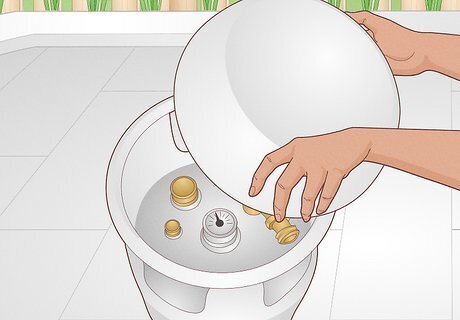
Remove the dome cover from the tank. Your propane tank will have a cover regardless of if it’s above-ground or partially buried. Look for the plastic or metal cover on the top or end of your propane take. Simply lift off the cover and set it aside. The cover helps protect the gauges and valves from damage.
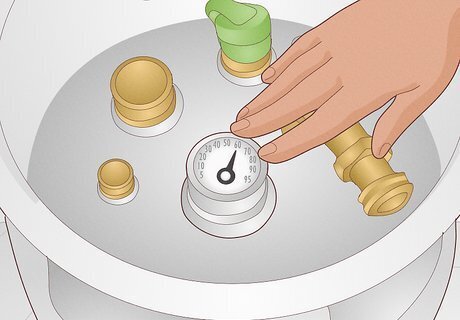
Check the number the dial is pointing at on the tank’s percentage gauge. The percentage gauge looks like a large speedometer and is usually numbered 5–95. Look what number the dial is pointing at. That number is the percentage of the tank that is still full of propane. Propane tanks are considered full when they’re at 80%, even if the gauge goes higher. That gives the gas extra room to expand inside the tank during warm weather. Otherwise, the tank could burst. There are 2 gauges on a propane tank. The float gauge is the one you take a reading from and measures the liquid level of the propane. The fixed level gauge, or bleeder valve, is only used by a technician and lets out liquid when the tank is filled above 80% full.
Measuring LP Gas in a Small Tank
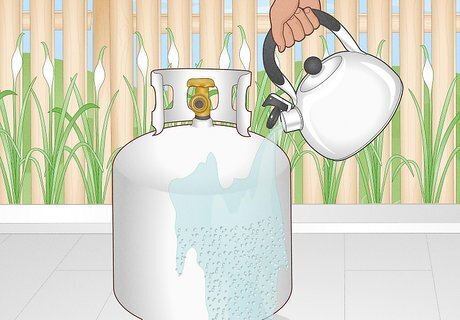
Pour hot water on the tank and feel where it’s cold. Fill a small bucket or pot with hot water from your tap and pour it down the side of your propane tank. Put your hand on top of the tank and slide it down until you feel a cold spot. Where you first felt the cold spot is the level of propane inside the tank. For example, if the tank first feels cold halfway down, then the tank is about half-full. The propane absorbs the heat from the water, leaving a cold spot on the metal.
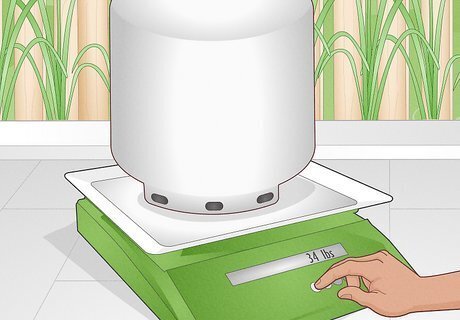
Weigh the tank. Check for the weight of the empty tank on its handle. Then, put your propane tank on a scale and write down its current weight. Subtract the weight of the empty tank from the actual weight. Since 1 gallon (3.8 L) of propane weighs about 4.2 lbs, just divide the remaining weight by 4.2 to find out how much propane you have left. If you found weight in kilograms, then divide the remaining weight by 1.9 instead.
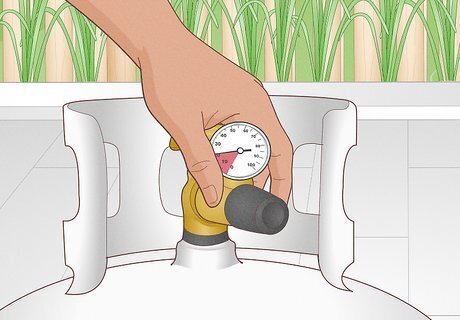
Install a pressure gauge on the tank. A pressure gauge is small dial that screws onto your propane tank and measures the pressure inside the tank to determine how full it is. Turn off the supply valve on your propane tank and detach the gas line. Screw one end of the pressure gauge onto the tank and attach the gas line to the other side. Open the supply valve on the tank and check the reading on the gauge. The pressure gauge may have percentages listed, or it may just have color-coded sections where green means you have a good supply of gas and red means it’s time to refill your tank.
When should I refill my propane tank?
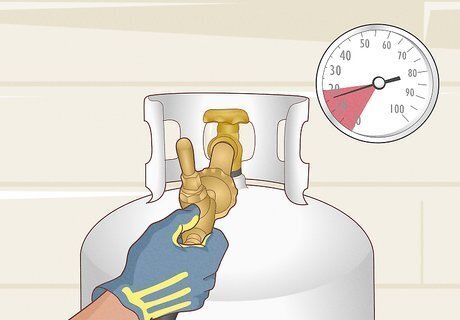
Have your tank refilled when it drops below 20% full. If your reading is 20% or below, contact a propane technician soon so you can schedule a filling. Avoid letting your tank go completely empty since it could potentially create leaks in the system that need to be checked and repaired. How long your propane lasts depends on how many gas-powered appliances you use and how often you use them.

















Comments
0 comment